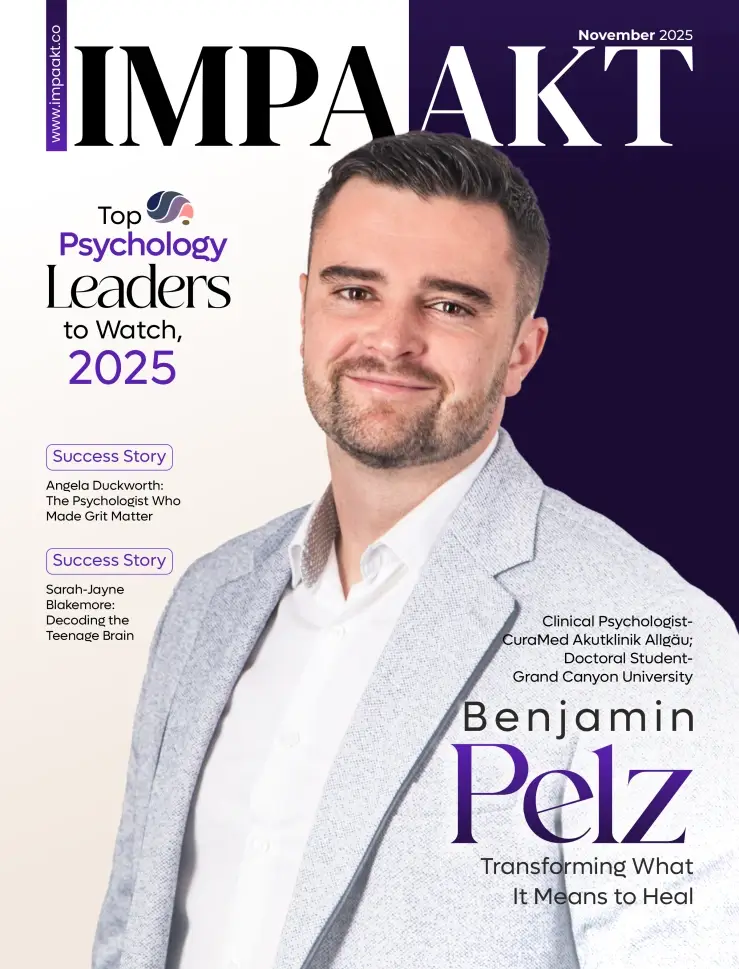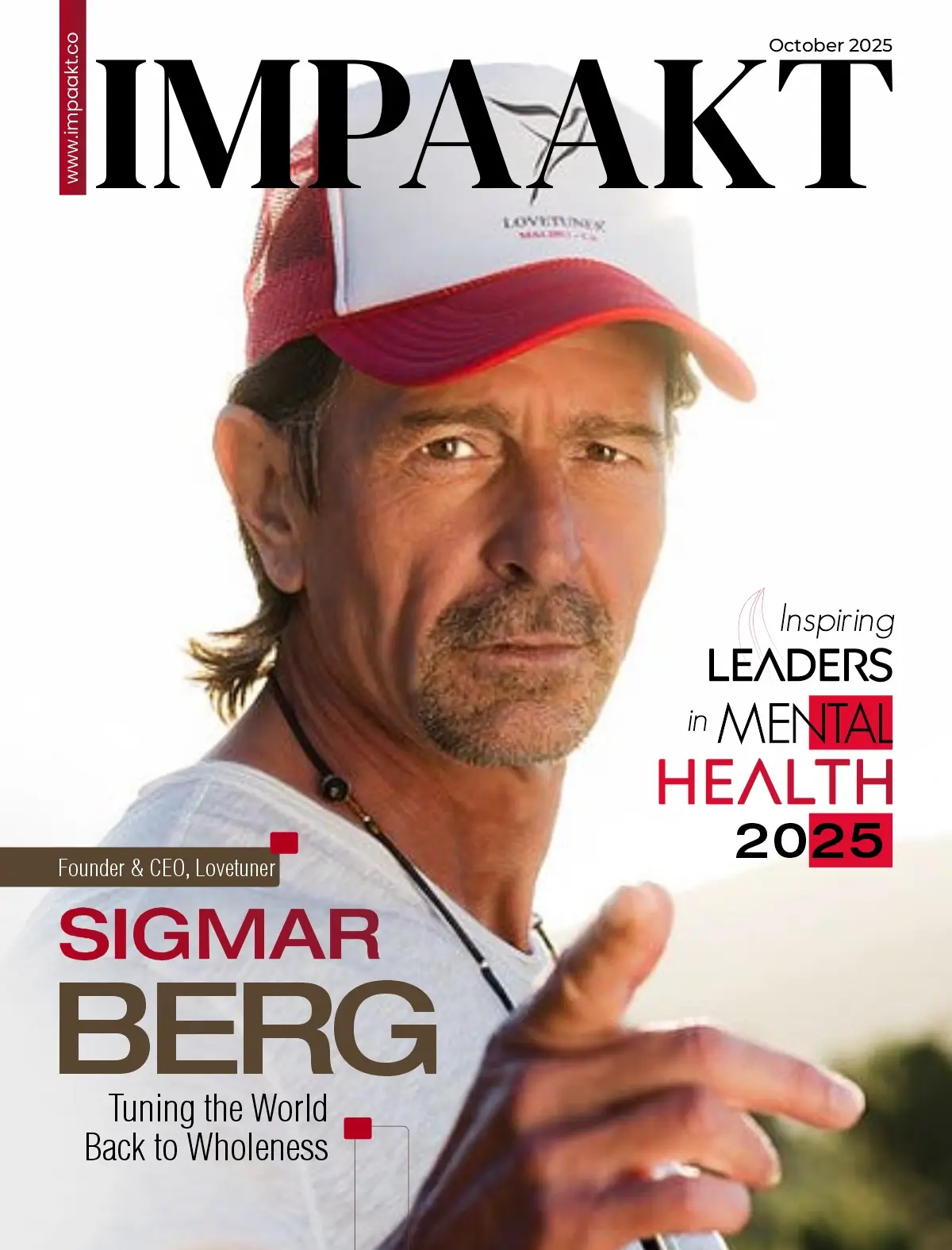Mental health has become the invisible drain on corporate balance sheets. One in five Americans experiences mental health challenges annually, yet the system designed to help them is fundamentally broken. The numbers tell a stark story: employees wait an average of 48 days to see a therapist. Many providers don’t accept insurance. Quality of care varies wildly because evidence-based therapeutic treatments aren’t consistently applied. And when employees finally access care, there’s no guarantee it will be the right fit.
The cost of this broken system extends far beyond individual suffering. Depression and anxiety alone cost the global economy approximately $1 trillion per year in lost productivity. Untreated mental health conditions drive up healthcare costs across the board, fuel absenteeism and presenteeism, and contribute to turnover rates that hemorrhage organizational knowledge and culture.
For decades, employers relied on Employee Assistance Programs (EAPs) as their mental health solution. Yet traditional EAPs suffer from dismally low utilization rates—often below 5%—and provide limited sessions that rarely address underlying issues. The question facing forward-thinking organizations wasn’t whether to invest in mental health, but how to invest in solutions that actually work.
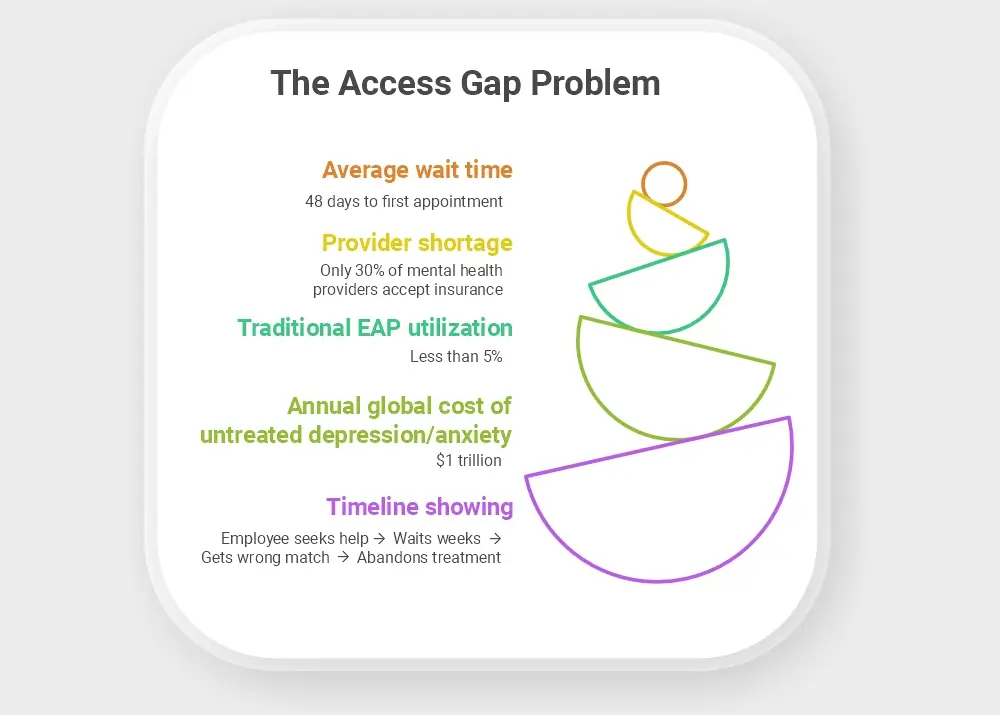
The Digital-First Revolution: Two Models, One Mission
The good news is a new generation of mental health platforms built on a radical premise are changing the narrative: technology can eliminate access barriers while improving clinical outcomes.
Two companies exemplify this transformation—Lyra Health and Headspace Health—each approaching the access problem from different angles but arriving at similar conclusions.
Lyra Health: Precision Matching Meets Clinical Excellence
Founded in 2015 by David Ebersman, former CFO of Facebook, Lyra Health emerged from a simple observation: the mental healthcare system operates on trial and error when it should operate on data and evidence. Ebersman brought Silicon Valley’s tech-driven approach to an industry desperately in need of innovation.
Lyra’s model combines technology with human expertise. The platform uses evidence-based matching algorithms to connect employees with the right provider from a curated network of therapists and coaches—all of whom use clinically proven therapeutic treatments. But the innovation goes deeper: Lyra employs measurement-based care, continuously tracking outcomes and adjusting treatment plans based on data rather than guesswork.
The approach has attracted major corporate clients including Morgan Stanley, Starbucks, and Meta. Today, Lyra serves millions of employees globally and has achieved a valuation of $5.6 billion. More importantly, the company has published 20 peer-reviewed studies demonstrating that its approach doesn’t just improve access—it improves outcomes.
Headspace Health: From Meditation App to Comprehensive Care
Headspace began in 2010 as a meditation and mindfulness app founded by Andy Puddicombe and Rich Pierson. For years, it was synonymous with guided meditation—accessible, evidence-based, and beloved by millions. But in 2021, Headspace announced a $3 billion merger with Ginger, a leader in on-demand mental healthcare, creating Headspace Health.
The merger united Ginger’s clinical care model—offering one-on-one coaching, therapy, and psychiatry—with Headspace’s proven mindfulness content and massive user base. The result was a comprehensive mental health platform spanning the full spectrum of care, from preventive mindfulness practices to clinical interventions for serious mental health conditions.
Headspace Health’s unified platform provides personalized mental health plans and care navigation tools for employees, while giving employers insights into engagement and outcomes. It’s mental healthcare designed for how people actually seek help: accessible, immediate, and free from stigma.
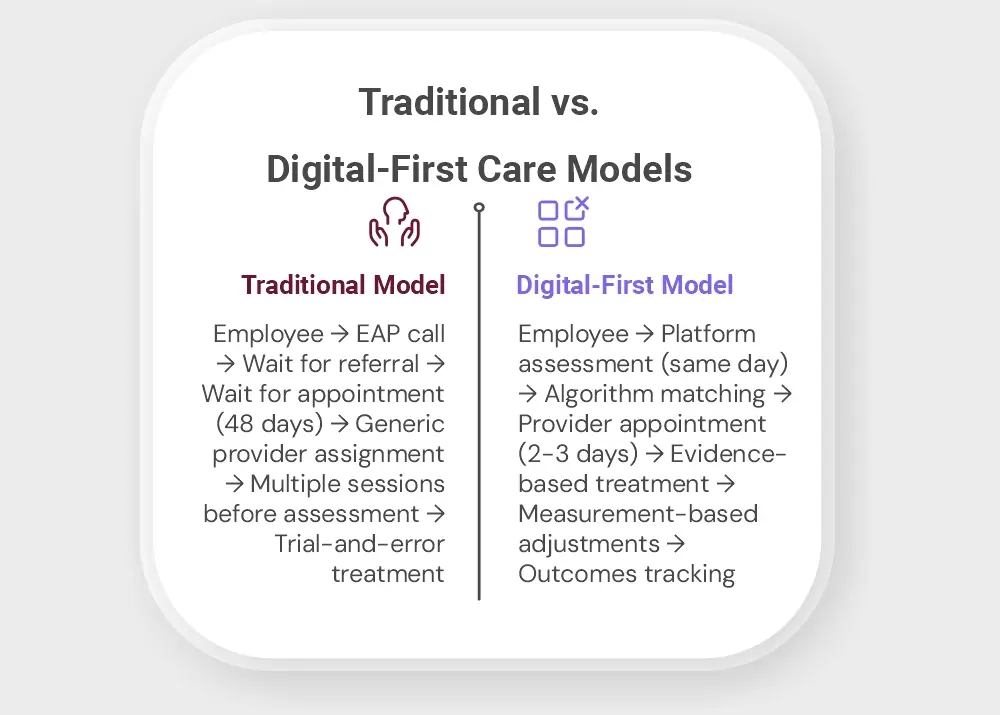 The Proof Is in the Outcomes
The Proof Is in the Outcomes
Bold claims require bold evidence. Both Lyra Health and Headspace Health have invested heavily in research, publishing peer-reviewed studies that demonstrate measurable clinical and business outcomes.
Lyra Health’s Evidence Base
Lyra’s commitment to measurement-based care has generated impressive results documented across 20 peer-reviewed studies:
Clinical Outcomes:
- Patients recover twice as fast compared to traditional care models
- High-quality care delivered consistently across the provider network
- Evidence-based therapeutic treatments applied systematically
Business Outcomes:
- 26% reduction in overall healthcare claims costs for participants annually
- Approximately $2,300 per participant per year in sustained medical cost reductions (documented in a four-year independent study)
- 3:1 return on investment—the highest documented ROI in mental health benefits
Perhaps most compelling is Lyra’s aerospace case study. A leading aerospace manufacturer with over 15,000 employees partnered with Lyra to deliver fast access to high-quality mental health care. In just two years, the partnership achieved a 39% reduction in mental health care costs while simultaneously increasing the number of employees receiving support. This isn’t cost reduction through reduced access—it’s cost reduction through effective treatment.
Headspace Health’s Clinical Validation
Headspace Health’s approach has been validated through more than 25 published studies in peer-reviewed journals. A randomized controlled trial demonstrated that people who engaged in mindfulness training on the Headspace app experienced:
- 19% reduction in anxiety symptoms
- 29% reduction in depression symptoms after eight weeks of use
For the clinical care side (formerly Ginger), outcomes were equally impressive:
- 70% of members see improvement in depression symptoms within 10-14 weeks, compared to only 30% in leading clinical studies
- Average wait time of just 2 days for therapy appointments (vs. 48 days nationally)
- 5-10x higher engagement rates compared to traditional EAPs
Organizations using Headspace Health report saving up to $5,000 per engaged employee—a combination of reduced healthcare costs, decreased absenteeism, and improved productivity.
The Strategic Implementation: What Success Looks Like
Both platforms succeeded because they understood that access isn’t just about availability—it’s about removing every barrier between an employee and effective help.
Barrier 1: Time to First Appointment
Traditional mental healthcare requires employees to navigate insurance networks, research providers, call multiple offices, and wait weeks or months for availability. Digital-first platforms eliminate this friction. Employees access care within days, often within 24-48 hours. This speed matters: when someone finally decides to seek help, delay can mean the difference between engagement and abandonment.
Barrier 2: Provider Matching
Finding the “right” therapist in traditional systems is trial and error. Patients often see multiple providers before finding a good fit—if they persist at all. Lyra’s algorithm considers clinical needs, personal preferences, provider specialties, and availability to make evidence-based matches upfront. Headspace Health’s care navigation tools guide employees to the right level of care—whether that’s mindfulness exercises, coaching, therapy, or psychiatry.
Barrier 3: Quality and Consistency
Not all mental healthcare is created equal. Many providers don’t use evidence-based treatments, and outcomes vary wildly. Both platforms curate their provider networks rigorously, requiring evidence-based therapeutic approaches and measuring outcomes continuously. If a provider isn’t delivering results, the data reveals it.
Barrier 4: Stigma and Privacy
Many employees avoid mental health services due to stigma or privacy concerns. Digital-first platforms provide discrete, accessible entry points. Employees can begin with self-guided tools before progressing to coaching or therapy. The experience feels more like using a health app than “seeing a therapist”—reducing the psychological barrier to entry.
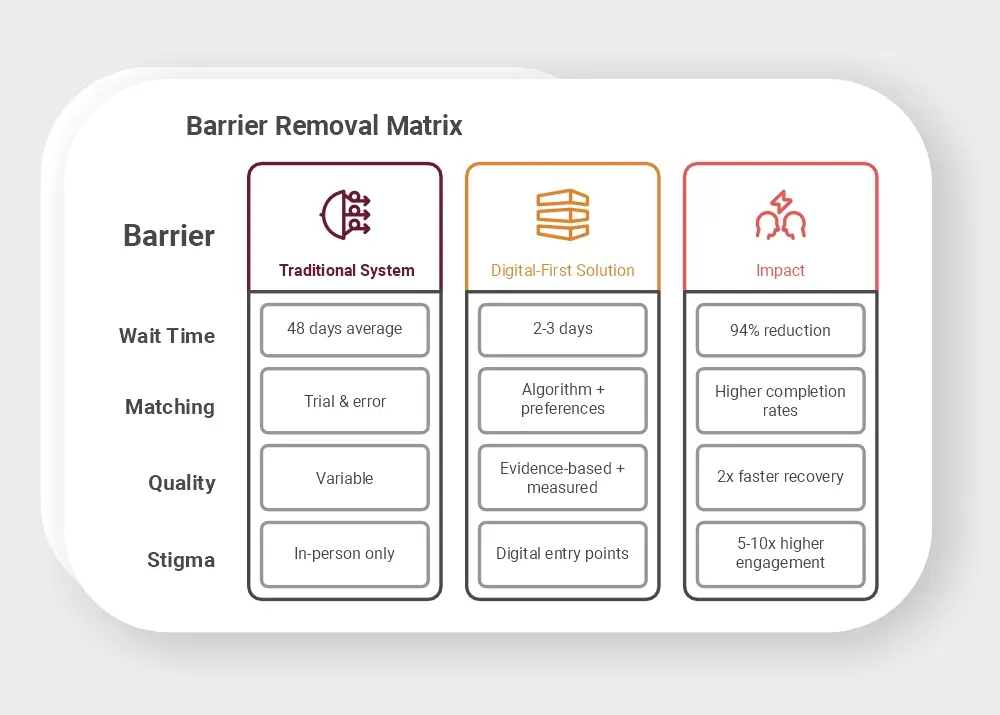
The Business Case: Why CFOs Are Paying Attention
Mental health is no longer a “soft” benefit—it’s a strategic investment with measurable returns. The aerospace case study offers a blueprint: implementing Lyra Health cost the manufacturer upfront but delivered 39% cost reduction within two years while expanding access. That’s the holy grail of healthcare: better outcomes at lower costs.
The ROI equation includes multiple factors:
- Direct healthcare cost reduction: Effective mental health treatment reduces overall medical spending
- Productivity gains: Mentally healthy employees are more engaged and productive
- Turnover reduction: Mental health support improves retention
- Absenteeism and presenteeism reduction: Employees miss fewer days and perform better when present
Lyra’s documented 3:1 ROI means organizations receive $3 in value for every $1 invested—rare in any healthcare intervention. Headspace Health’s $5,000 savings per engaged employee represents a similar value proposition.
But the most compelling business case isn’t financial—it’s strategic. Organizations that solve mental health access become employers of choice, attract top talent, and build cultures where people can perform at their best.
What This Means for Your Organization
The access barrier in mental healthcare isn’t inevitable—it’s solvable. Digital-first platforms have proven that technology, combined with clinical expertise and evidence-based care, can democratize access while improving outcomes and reducing costs.
For organizational leaders, the implications are clear:
- Mental health is a strategic priority, not a compliance checkbox. The data demonstrates measurable business impact.
- Traditional EAPs are insufficient. Low utilization and limited sessions don’t address the scope of employee mental health needs.
- Evidence matters. Demand platforms that publish peer-reviewed research demonstrating clinical and business outcomes.
- Access is multidimensional. It’s not just about provider availability—it’s about removing barriers across the entire journey from awareness to recovery.
- Measurement drives improvement. Platforms that track outcomes continuously can identify what works and adjust accordingly.
The mental health access crisis represents both a challenge and an opportunity. Organizations that invest in comprehensive, evidence-based digital solutions don’t just support employee wellbeing—they gain competitive advantage.
Lyra Health and Headspace Health prove what’s possible when innovation meets intention. They’ve transformed mental healthcare from a frustrating, ineffective system into an accessible, outcome-driven benefit. The question for every organization is simple: Will you be part of this transformation?
The access barrier is falling. The only question is how quickly your organization will move to eliminate it.







